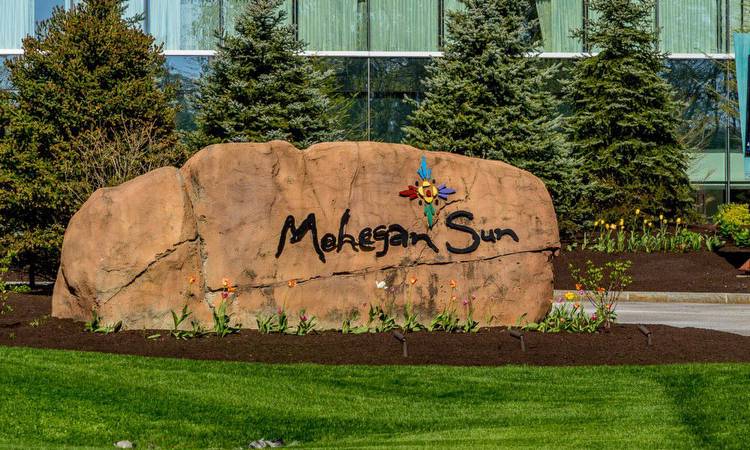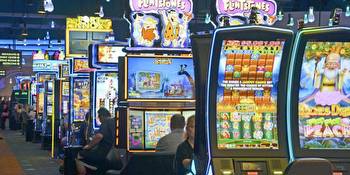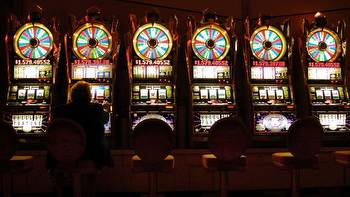U.S tribal casinos took a nearly 20% gaming revenue hit in fiscal year 2020

Gaming revenues at tribal casinos in fiscal year 2020 came up $6.7 billion short of 2019’s gross, the first big Indian-gaming drop since 2000, the National Indian Gaming Commission announced Tuesday.
Though the shortfall was just under 20% year over year, the Commission painted an optimistic picture, insisting that investments the tribes made prior to and during the pandemic will pay off in a sustainable recovery that’s under way in 2021.
NIGC Chairman Sequoyah Simermeyer released the annual report at the Oklahoma Indian Gaming Association Conference in Oklahoma City. It showed $27.8 billion in gross gaming revenue at tribal casinos in fiscal-year 2020, equivalent to the gross eight years prior when tribal gaming recorded $27.9 billion in revenue in fiscal-year 2012.
By more recent comparison, in fiscal-year 2019, tribes reported a record $34.6 billion in revenue. The 2020 number marked the first year-over-year decline since 2009, when it dropped to $26.5 billion from $26.7 billion in 2008 in the aftermath of the Great Recession.
The gross gaming revenue for an operation is based on the amount wagered minus winnings returned to players. The Commission’s fiscal year ended September 30, 2020.
“Indian gaming revenues, like many other parts of the economy, have suffered because of the COVID pandemic,” Simermeyer said. “The gross gaming revenue represented a significant decrease. The industry has not seen this significant decrease in nearly 20 years. The 2020 decrease has ended the steady year-over-year growth rate that the Indian gaming industry has experienced over the last 10 years. The last 10 years of steady growth helped to make it clear that the significant decline in revenue for fiscal year 2020 was a result of the pandemic.”
The NIGC, however, has seen the benefits of investments made by tribes during the pandemic when it comes to public health, workforce development, and economic enterprise, Simermeyer said. Many tribes have undertaken capital projects to expand their casinos and enhance gaming operations in their communities.
In addition, in May, the San Manuel Band of Indians in Southern California reached a deal with Red Rock Resorts to become the first Native American tribe to own a Las Vegas casino with their purchase of the Palms Resort for $650 million. The deal for the 700-room resort that’s been shuttered since March 2020 is expected to close by the end of the year.
Prior to that in March, Connecticut’s Mohegans became the first tribe to operate a casino in Nevada by taking over the newly opened Mohegan Sun Casino at Virgin Hotels Las Vegas. It was previously operated as the Hard Rock Hotel-Casino.
“These investments often resulted from action taken by the Indian gaming industry, tribal regulatory bodies, and tribal governments during this past year,” Simermeyer said of the Indian gaming industry overall. “This invaluable investment can provide hope for the industry’s strong return and an important stability for a well-regulated industry and is important to tribal communities that use Indian gaming to strengthen tribal governments and economies.”
It’s been more than 500 days since the first tribal casino was closed by COVID and as of this week, of the 524 tribal gaming operations, more than 80 closed for six months or longer. Some 30 of those 80 have remained closed since mid-March 2020, Simermeyer said. Altogether, about 95% of Indian gaming operations have reopened, he said.
The gaming revenue report came from 248 tribes across 29 states. Some 64% of all Indian gaming facilities across eight regions made less than $25 million in revenue and less than 8% of total gross gaming revenue nationwide. Only 4% of gaming operations reported more than $250 million in gaming revenue, for a total of 37% of gaming revenue nationwide.
“Unfortunately, due to the COVID pandemic, all eight administrative regions reported a decrease in their gross gaming revenues,” said Associate Commissioner Jeannie Hovland. “While this was not necessarily surprising news due to the impact the pandemic has had on our communities, we’re grateful the reported decline in revenues was not more severe.”
The tribes in California and northern Nevada reported the smallest decline, 13.2%, from $9.68 billion to $8.39 billion.
The South Dakota region that also includes North Dakota, Wyoming, and Montana had the biggest decline at 36.6%, dropping from $376.4 million to $238.6 million in 2020.
Among the other regions:
- Oregon, Washington, Alaska, and Idaho won $3.1 billion in 2020, down from $3.8 billion or 18.3%.
- Arizona, New Mexico, Southern Nevada, and Colorado earned $2.3 billion in 2020, down from $3.2 billion or 28%.
- The $3.7 billion in 2020 from the upper Midwest that includes Minnesota, Michigan, Wisconsin, Indiana, Iowa, and Nebraska was down from $4.9 billion or 24.2%.
- Eastern Oklahoma and Kansas had $2.1 billion in 2020, down from $2.4 billion or 14.7%.
- Western Oklahoma and Texas recorded $2 billion in 2020, down from $2.6 billion or 22.7%.
- The region that covers New York, Connecticut, Florida, North Carolina, Alabama, Mississippi, and Louisiana had $5.8 billion in 2020, down from $7.3 billion or 21%.
Tribal gaming helps with health, education, and social services for tribal members. It also helps regional economies, Commission members said.

























